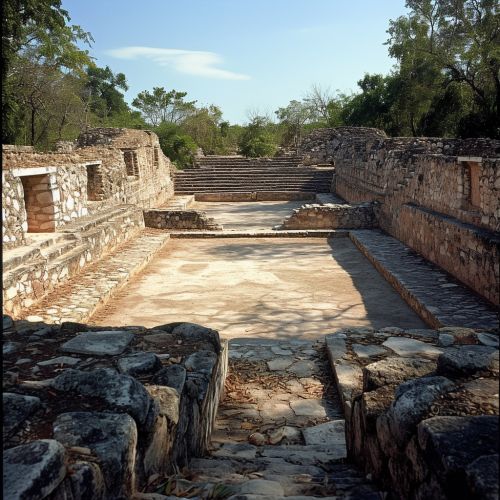Mesoamerican ballgame
Origins and History
The Mesoamerican ballgame, known as ōllamaliztli in Nahuatl, was a sport with ritual associations played since 1400 BC by the pre-Columbian people of Ancient Mesoamerica. The sport had different versions in different places during the millennia, and a modern version of the game, ulama, is still played in a few places by the indigenous population.


The origins of the Mesoamerican ballgame are likely rooted in the southern Gulf Coast lowlands of Mexico, in the current states of Veracruz and Tabasco, in the region of the Olmec civilization, the first great civilization in Mesoamerica. The earliest known rubber balls come from the sacrificial bog at El Manati, an Olmec-associated site in Veracruz.
Gameplay
The rules of ōllamaliztli are not known, but judging from its descendant, ulama, they were probably similar to racquetball, where the aim is to keep the ball in play. The stone ballcourt goals are a late addition to the game. In the most common theory of the game, the players struck the ball with their hips, although some versions allowed the use of forearms, rackets, bats, or handstones. The ball was made of solid rubber and weighed as much as 4 kg (9 lbs), and sizes differed greatly as there was no standard.
Cultural Significance
The Mesoamerican ballgame was more than just a sport. It had significant ritual aspects, and major formal ballgames were held as ritual events, often featuring human sacrifice. The association between human sacrifice and the ballgame appears rather late in the archaeological record, no earlier than the Classic era. The ballgame was often played before a major ritual event, in order to interact with the gods and manipulate the cosmic forces of life and death.
Modern Day Influence
The Mesoamerican ballgame continues to have an influence in modern day culture. The game is still played in its traditional form, known as ulama, in a few communities in Sinaloa, Mexico. The game has also influenced modern sports, with similarities seen in sports such as soccer and basketball.
